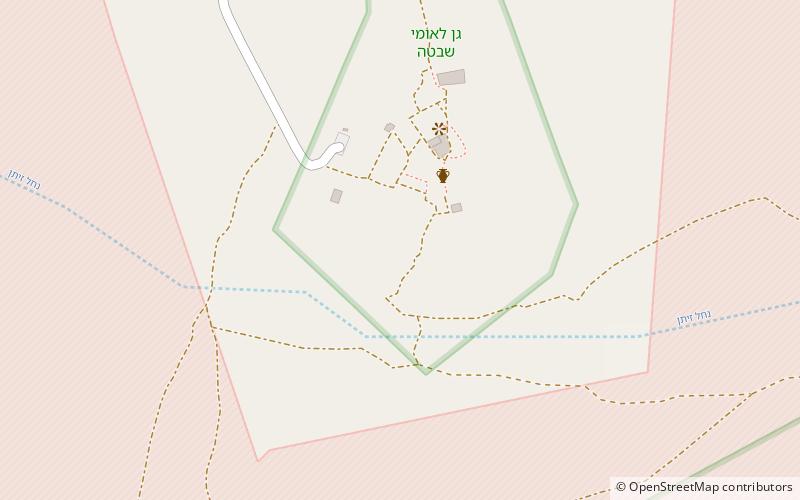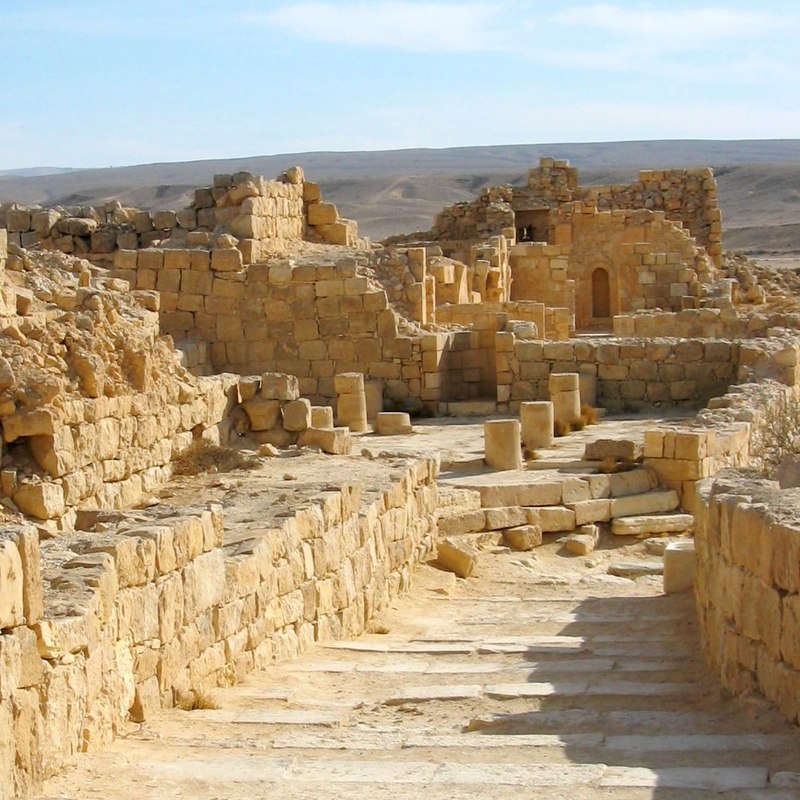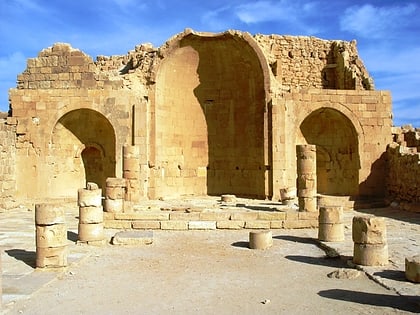Shivta


Facts and practical information
Shivta, an ancient city located in the Negev Desert of Israel, is a testament to the adaptability and resilience of early settlements in harsh environments. This UNESCO World Heritage site offers visitors a glimpse into a bygone era of desert living, with well-preserved ruins that date back to the Byzantine period.
The city was originally established in the late 1st century BCE and flourished during the Byzantine era, from the 4th to the 7th century CE. Shivta is renowned for its sophisticated water management systems, which include an intricate network of cisterns and channels that collected and stored water, a precious resource in the arid desert landscape. These innovations highlight the ingenuity of its inhabitants in overcoming the challenges posed by their environment.
The archaeological park at Shivta reveals a complex urban layout with residential areas, public buildings, and churches, including three significant Byzantine churches that exhibit classic basilica architecture. The churches, with their detailed stone work, including still-visible frescoes and mosaics, are among the most striking features of the site.
Shivta's decline after the Byzantine period remains somewhat of a mystery, but it continued to be inhabited until at least the 9th century. Today, visitors to Shivta can walk through the silent ruins, imagining the once-vibrant community that thrived in this remote desert location.
Frequently Asked Questions (FAQ)
When is Shivta open?
- Monday 24h
- Tuesday 24h
- Wednesday 24h
- Thursday 24h
- Friday 24h
- Saturday 24h
- Sunday 24h
